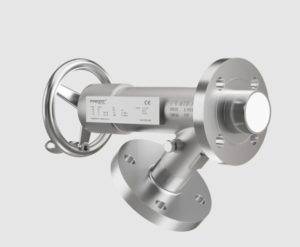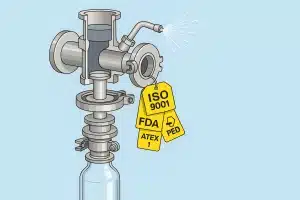In the world of pneumatic systems, efficient and reliable operation is paramount. One of the critical components ensuring this efficiency and reliability is the air blow check valve. These valves play a crucial role in various applications, from industrial machinery to HVAC systems, and their importance cannot be overstated. This article delves into the functionality, types, and applications of air blow check valves, highlighting their significance in modern engineering.
What is an Air Blow Check Valve?
An air blow check valve is a type of valve designed to allow air to flow in one direction only, preventing backflow. It ensures that the air moves efficiently through a system without reversing direction, which could cause malfunctions or damage to equipment. By allowing air to flow only in a predetermined direction, these valves help maintain the integrity and performance of pneumatic systems.
How Do Air Blow Check Valves Work?
Air blow check valves operate based on a simple yet effective mechanism. When air flows in the desired direction, it pushes a disc or ball away from the valve seat, allowing the air to pass through. If the air attempts to flow in the opposite direction, the disc or ball is pushed against the valve seat, creating a seal that prevents backflow. This unidirectional flow is crucial for maintaining system pressure and ensuring the proper functioning of pneumatic components.
Types of Air Blow Check Valves
There are several types of air blow check valves, each designed to meet specific needs and applications. Some of the most common types include:
- Ball Check Valves: These valves use a ball to block or allow flow. When air flows in the correct direction, the ball is pushed away from the seat, permitting passage. In the reverse direction, the ball seals against the seat.
- Disc Check Valves: These valves use a disc that moves away from the seat to allow flow and seals against the seat to prevent backflow. They are often used in applications requiring higher flow rates.
- Swing Check Valves: Featuring a hinged disc that swings open to permit flow and closes to prevent backflow, swing check valves are ideal for systems with low to medium flow rates.
- Piston Check Valves: These valves use a piston to control the flow of air. When air flows in the correct direction, the piston moves to allow passage. In reverse flow, the piston creates a seal to prevent backflow.
Applications of Air Blow Check Valves
Air blow check valves are used in a wide range of applications across various industries. Some of the key applications include:
- Industrial Machinery: Ensuring the correct operation of pneumatic tools and machinery by preventing backflow and maintaining consistent pressure.
- HVAC Systems: Maintaining the proper flow of air in heating, ventilation, and air conditioning systems to ensure efficient operation and energy savings.
- Automotive Industry: Used in pneumatic braking systems and air suspension systems to ensure reliable and safe operation.
- Medical Equipment: Ensuring the proper function of devices like ventilators and other respiratory equipment by maintaining unidirectional airflow.
- Food and Beverage Industry: Used in pneumatic conveying systems to transport ingredients and products without contamination or backflow.
Benefits of Using Air Blow Check Valves
Incorporating air blow check valves into pneumatic systems offers several benefits:
- Enhanced System Efficiency: By preventing backflow, these valves maintain consistent pressure, improving the overall efficiency of the system.
- Equipment Protection: Preventing reverse flow protects sensitive components from potential damage, extending the lifespan of the equipment.
- Energy Savings: Maintaining unidirectional flow reduces the energy required to keep the system operating, leading to cost savings over time.
- Improved Safety: Preventing backflow reduces the risk of malfunctions and failures, enhancing the safety of the system and its operators.
Conclusion
Air blow check valves are indispensable components in modern pneumatic systems, providing critical functions that ensure efficiency, reliability, and safety. Understanding the various types and applications of these valves can help engineers and technicians select the right valve for their specific needs, ultimately leading to better-performing systems and reduced operational costs. As industries continue to advance, the role of air blow check valves will remain pivotal in maintaining the integrity and functionality of pneumatic systems.






